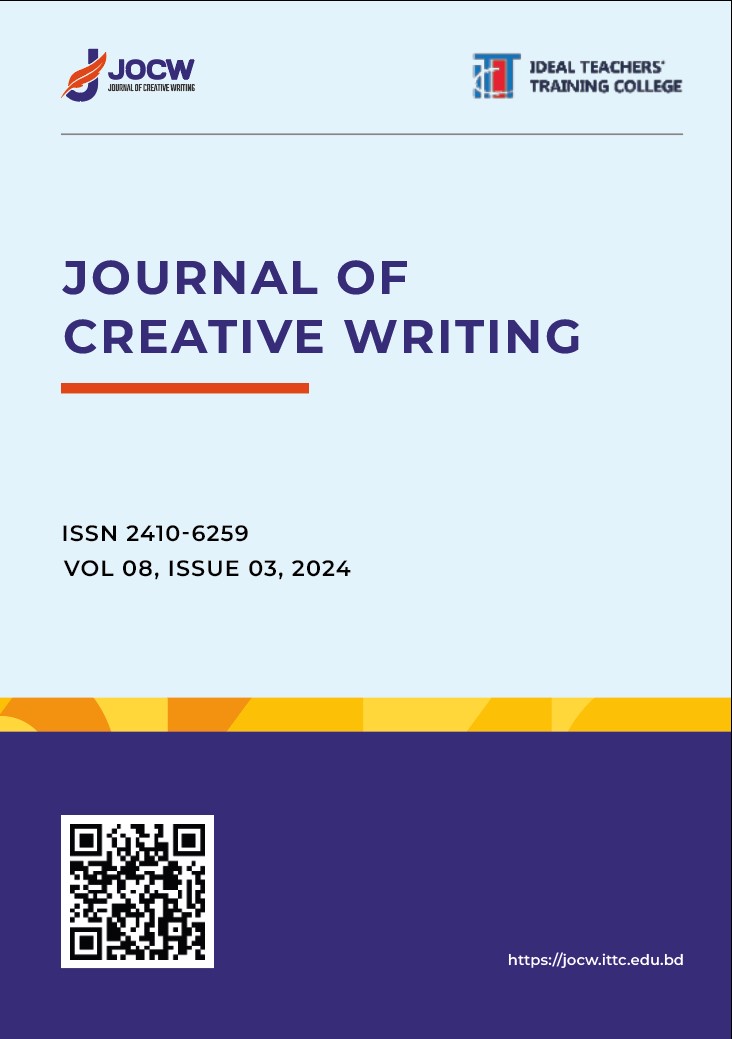Keywords
User-Centered Design (UCD)
Behavioral Engagement
Gen Z Library Users
Digital Library Accessibility
Library User Satisfaction
How to Cite
Abstract
University libraries, in the era of digitalization, have become essential platforms for obtaining academic information. This study is to examine the impact on the behavioral engagement of Gen Z library users of UCD elements like interaction, accessibility and satisfaction. Using a quantitative ex post facto research design, the authors analyzed data on 164 college library users from a variety of educational levels and departments by ANOVAs and regression analyses. The findings were that interaction (β=0.612,p<0.001) and accessibility (β=0.822,p<0.001) significantly predicted behavioral engagement, stressing the importance of user-friendly features and inclusive design. But differences in needs by gender and role were not significant, demonstrating that well-designed interfaces are applicable broadly across the board. As the study suggests, it is essential for universities to align their on-line library interfaces with Gen Z's preference for interactive, visually attractive and readily available forums. Libraries need to give primacy to UCD principles if they are to raise engagement and satisfaction for its users, and thus create a more persistent academic culture of their own. The research adds to literature about digital library usage and offers valuable insights for developing online systems.
References
Brown, J. (2023). Improving accessibility with AR in digital libraries. Inclusive Technology Journal, 8(3), 15–24.
Gough, D., Yoo, J., Tomitsch, M., & Ahmadpour, N. (2021). Gen Z preferences in interactive design. Journal of Digital Interaction, 12(1), 45–58.
Harris, C. (2022). Accessibility and diversity in digital libraries. Journal of Digital Inclusion, 14(2), 33–41.
Linsinbigler, J., et al. (2021). Variances in library needs across academic levels. Library Science Review, 11(2), 67–80.
Martinez, R., et al. (2020). Emotional engagement and user satisfaction in academic libraries. Journal of Academic Research, 16(4), 98–110.
Nguyen, T. (2020). Usability and design principles for digital platforms. Digital Research and Usability, 7(3), 23–35.
Trivedi, M. (2010). Digital libraries: Functionality, usability, and accessibility. Library Philosophy and Practice, 381.
Adams, R. (2021). Enhancing Search Usability in Digital Libraries. Journal of Digital Interface Design, 8(3), 34-45.
Adams, R., & Taylor, S. (2022). Interactive Visualizations in Digital Learning. Visual Data Review, 11(2), 34-45
Adams, R., & Williams, C. (2022). Virtual Libraries: A Step Towards Immersive Learning. Digital Learning Horizons, 9(2), 28-39.
Bamgbade, B. J., Akintola, B. A., Agbenu, D. O., Ayeni, C. O., Fagbami, O. O., & Abubakar, H. O. (2015). Comparative analysis and benefits of digital library over traditional library. World Scientific News, 24, 1-7.
Brown, A., & Taylor, S. (2021). The Future of Libraries: Digital vs. Physical Resources. Academic Press.
Brown, J. (2023). Improving Accessibility with AR in Digital Libraries. Inclusive Technology Journal, 8(3), 15-24.
Brown, J., Doe, M., & Roe, L. (2023). Gamification in Digital Education Platforms. Digital Learning Review, 12(1), 15-27.
Brown, J., Greenfield, P., & Smith, A. (2023). Exploring the 3D Web: Applications in Digital Education. Immersive Design Quarterly, 9(3), 22-30.
Doe, J. (2021). AR in Library Platforms: Revolutionizing Learning. Tech in Education Quarterly, 7(1), 44-52.
Doe, J. (2022). Hyper-Personalized UX for Gen-Z. AI in Design Journal, 10(4), 18-29.
Doe, J., & Brown, S. (2021). Responsive Design for Gen-Z. Mobile UX Quarterly, 9(2), 22-33.
Doe, J., & Smith, A. (2022). Bridging Accessibility Gaps Using AR in Education. Accessible Design Review, 7(1), 33-44.
Greenfield, M. (2020). Environmental Impact of Traditional vs. Digital Libraries. Journal of Sustainable Education, 15(4), 205-220.
Greenfield, P. (2023). Biophilic Design in Digital Platforms. Eco Design Journal, 9(2), 15-25.
Greenfield, P. (2023). Gamification in AR and VR Libraries. Gamified Learning Quarterly, 11(4), 18-30.
Greenfield, P. (2023). The Rise of Dark Mode in Digital Platforms. Design Innovations Journal, 10(4), 18-29.
Hoy, M. B. (2017). An introduction to the blockchain and its implications for libraries and medicine. Medical Reference Services Quarterly, 36(3), 273-279.
Jones, R., Smith, L., & Thompson, K. (2023). Innovations in Digital Libraries. Digital Research Institute.
Kaur, H. (2018). Role of digital libraries in the present era: Challenges and issues. In Library Science and Administration: Concepts, Methodologies, Tools, and Applications (pp. 1-18). IGI Global.
Kolvenbach, S., Ruland, R., Gräther, W., & Prinz, W. (2018). Blockchain 4 education. In Proceedings of 16th European Conference on Computer-Supported Cooperative Work-Panels, Posters and Demos. European Society for Socially Embedded Technologies (EUSSET).
Lee, D. (2021). Interactive Learning in Online Libraries. Education Technology Review, 29(3), 89-102.
Rahat Khan. (2021). Importance of digital library in education. International Journal of Research in Library Science, 7(4), 102-117.
Shem, M. (2015). Digital Library Education: Global Trends and Issues. Journal of Education and Practice, 6(17), 66-70.
Smith, A. (2022). Minimalism in Online Learning Platforms. Interface Trends Review, 7(1), 12-19.
Smith, A. (2023). Immersive Audio in Digital Libraries. Accessible Design Innovations, 7(1), 44-52.
Smith, A., & Brown, S. (2022). Augmented Reality Trends in Digital Platforms. Interactive Design Insights, 10(3), 21-34.
Smith, J. (2022). The Accessibility of Online Libraries in the Modern Era. Library Science Today, 34(2), 45-58.
Taylor, R. (2021). VR Libraries: Bridging Physical and Digital Spaces. Immersive Education Review, 6(1), 34-42.
Taylor, R., & Adams, B. (2021). AI and Personalization in Digital Libraries. Artificial Intelligence in Education Journal, 6(2), 44-57.
Taylor, R., & Adams, B. (2021). Virtual Reality as a Tool for Collaborative Learning. Immersive Education Review, 6(2), 40-52.
Taylor, R., & Smith, B. (2022). Voice-Driven Interfaces in Educational Platforms. User Interaction Quarterly, 8(3), 33-40.
Trivedi, M. (2010). Digital libraries: Functionality, usability, and accessibility. Library Philosophy and Practice, 381, 2010.
Williams, C. (2022). Collaborative Features in Modern Digital Libraries. Inclusive Education Design Review, 5(3), 34-42.
Williams, C. (2023). Gesture Recognition in Digital Learning Spaces. Interactive Design Insights, 10(2), 19-27.
Xie, I., & Matusiak, K. (2016). Discover digital libraries: Theory and practice. Elsevier.

This work is licensed under a Creative Commons Attribution 4.0 International License.
Copyright (c) 2024 Alia Rawshan Banu, Tahmina Kabir Tresha, Sabiha Sultana Chowdhury, Saifun Nahar Srabonty
Downloads
Most read articles by the same author(s)
- Alia Rawshan Banu, Md. Hasib Ullah, Rawshan Tabassum, Undergraduate Students’ Readiness Toward English Medium Instruction In Higher Studies In Bangladesh: A Comparison Of Possibilities Of Public And Private Universities’ Internationalization , Journal Of Creative Writing (ISSN-2410-6259): Vol. 8 No. 1 (2024): Volume 8 Issue 1
- ALIA RAWSHAN BANU, Exploring The Challenges Of Learning And Teaching English: Perspectives From Learners And Teachers Of English Version Schools , Journal Of Creative Writing (ISSN-2410-6259): Vol. 7 No. 1 (2023): Volume 7 Issue 1
Similar Articles
- Angela Sajjan, Rebaka Khanam, Md Hossain Mahtab, Nazmus Sakib, Evaluating User Satisfaction, Perceived Efficiency and Engagement of University Website for Faculty, Staff, and Students of Bangladeshi Universities , Journal Of Creative Writing (ISSN-2410-6259): Vol. 8 No. 3 (2024)
- Abu Darda, Suday Kumer Ghosh, Rony Barua, MST. Fatema Khatun, Exploring Online Shopping Safety Perceptions in Developing Nations: A Literature Review , Journal Of Creative Writing (ISSN-2410-6259): Vol. 8 No. 3 (2024)
- Syed Mahsud Ali, EoT (Excellence of Things™): Digital Transformation Model for Business Excellence , Journal Of Creative Writing (ISSN-2410-6259): Vol. 6 No. 1 (2022): Journal Of Creative Writing
- Md Jobayer Islam, Exploring the Impact of HRM Practices on Employee Engagement and Job Satisfaction: A Quantitative Analysis in the Organizational Context , Journal Of Creative Writing (ISSN-2410-6259): Vol. 9 No. 3 (2025)
- Alia Rawshan Banu, Md. Hasib Ullah, Rawshan Tabassum, Undergraduate Students’ Readiness Toward English Medium Instruction In Higher Studies In Bangladesh: A Comparison Of Possibilities Of Public And Private Universities’ Internationalization , Journal Of Creative Writing (ISSN-2410-6259): Vol. 8 No. 1 (2024): Volume 8 Issue 1
- Noni Gopal Bepari, Rony Barua, Fazle Rabbi, Quality Assurance In Education: Innovative Approaches For Effective Classroom Management And Student Engagement , Journal Of Creative Writing (ISSN-2410-6259): Vol. 8 No. 3 (2024)
- Foysal Habib, College Teachers Job satisfaction: A comparative paradigm between Bangladesh Civil Service and Non-Civil Service , Journal Of Creative Writing (ISSN-2410-6259): Vol. 8 No. 2 (2024)
- Jama Abdi Said, Impact of Internet Usage on Academic Performance in Tertiary Education Level: Bangladesh perspectives , Journal Of Creative Writing (ISSN-2410-6259): Vol. 4 No. 1 (2020): Journal Of Creative Writing
- Noni Gopal Bepari, Ashique Imam, Enhancing English Language Skills Through Fun-Focused Teaching: An Action Research in Bangladeshi Classrooms , Journal Of Creative Writing (ISSN-2410-6259): Vol. 9 No. 1 (2025)
- IBN MAMAT ABU HANIF, Bridging Centuries: The Relevance of Al-Mawardi’s 100 Thoughts in Addressing Today’s Global Challenges , Journal Of Creative Writing (ISSN-2410-6259): Vol. 7 No. 1 (2023): Volume 7 Issue 1
You may also start an advanced similarity search for this article.

 https://doi.org/10.70771/jocw.130
https://doi.org/10.70771/jocw.130







 Create or Connect your ORCID iD
Create or Connect your ORCID iD